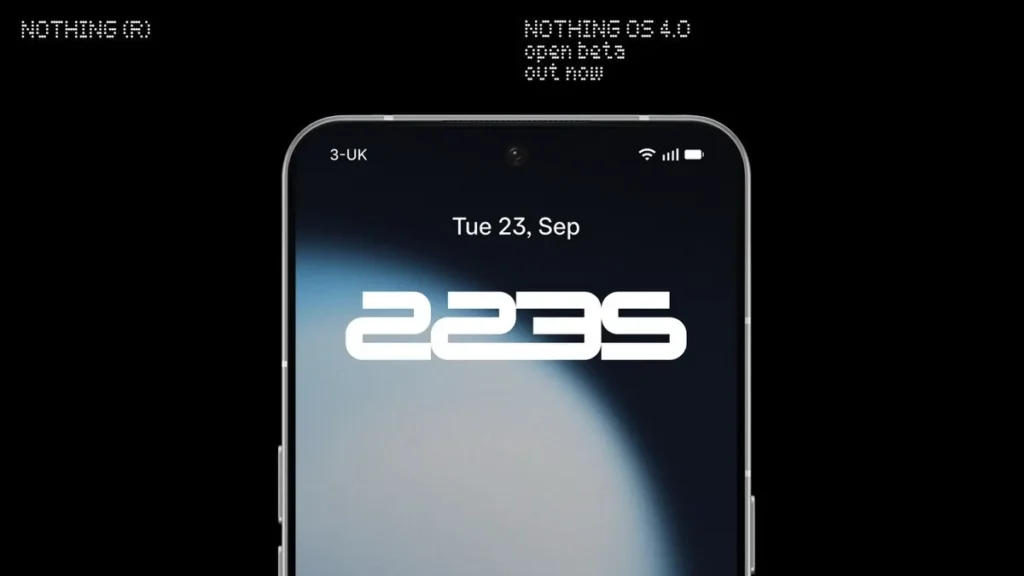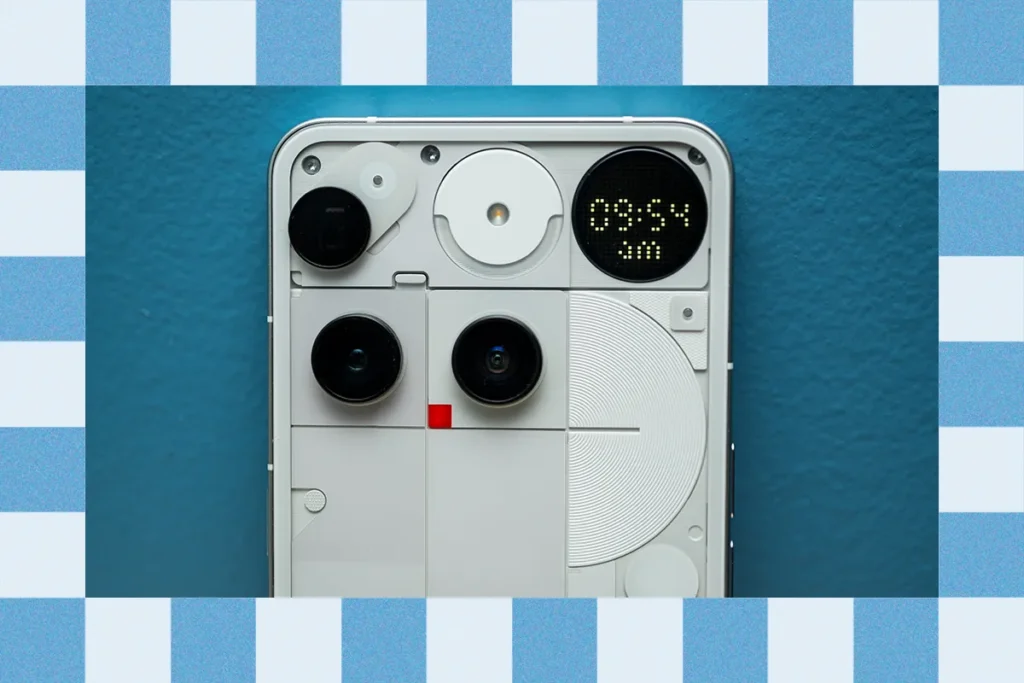A Phone Meant to Be Seen
By 2025, smartphones have largely blurred into indistinguishable tools: all-screen slabs, polished glass backs, incremental camera bumps. The Nothing Phone (3) resists this sameness. At first glance, you notice not only its transparent casing but also the Glyph Matrix — a circle of animated LEDs on the back that flicker like retro pixels. For some, it’s whimsical and expressive; for others, it’s indulgent gimmickry. Either way, the point is clear: this phone is meant to be noticed.
Nothing has always built its story on design. The Phone (1) charmed early adopters with its skeletal aesthetic. The Phone (2) matured into a more polished piece of hardware. The Phone (3), arriving with a starting price of $799, declares itself a flagship. It no longer asks to be compared to budget disruptors; it wants to stand toe-to-toe with Samsung, Google, and Apple. Whether it truly belongs there is where debate begins.
Holding the Device
At 218 grams, the Phone (3) is substantial in hand. The 9-millimeter frame makes it feel almost industrial, less svelte than its rivals but undeniably sturdy. The transparent back, with its exposed screws and circuit hints, nods to tech nostalgia — the days when you could pop open a device and see its parts. It’s ironic, then, that this phone is actually harder to repair than most of its peers, packed with adhesives and hidden screws.
The asymmetrical camera island is striking. Some critics say it looks awkward; others praise its bold refusal to mimic iPhones or Galaxies. In a sea of polished rectangles, this awkwardness feels intentional — a badge of independence.
View this post on Instagram
The Delineation
The 6.8-inch AMOLED screen is bright and fluid, peaking near 2,000 nits and flowing at up to 120 Hz. It performs with the richness expected of a 2025 flagship. Colors pop, motion is smooth, and HDR streaming looks cinematic.
But Nothing made a controversial adjustment: it reduced the PWM dimming frequency from 2,160 Hz to 960 Hz in low light. The move, intended to prioritize color fidelity, has divided users. For many, it’s imperceptible. For those sensitive to flicker, it introduces eye strain in dim environments. This encapsulates Nothing’s ethos: prioritize design purity and aesthetic intent, even if it doesn’t work for everyone.
Performance: Fast Enough, But Not the Fastest
Inside, the Phone (3) runs Qualcomm’s Snapdragon 8s Gen 4 with 12 or 16 GB of RAM. It’s a chip designed to balance flagship performance with efficiency. Apps launch instantly, multitasking is fluid, and casual gaming is seamless. For 90% of users, it feels like a true flagship.
Yet comparisons are inevitable. Against the Snapdragon 8 Elite powering the Galaxy S25 Ultra, the Phone (3) trails. Benchmarks expose its limits in sustained gaming, 4K editing, or AI-heavy tasks. Nothing’s flagship isn’t underpowered, but it isn’t leading either. And at this price, consumers expect nothing less than the best.
Battery: A Strength in Everyday Use
Where the Phone (3) excels is endurance. The 5,150 mAh silicon-carbon battery comfortably lasts a full day of demanding use. Some regions even ship with a 5,500 mAh cell, pushing closer to day-and-a-half stamina.
Charging is brisk: 65 W wired charging refuels it in under an hour, while 15 W wireless charging and reverse wireless support add flexibility. Unlike some rivals that push extreme wattages but sacrifice battery health, Nothing has struck a balance. This phone won’t be remembered as the longest-lasting, but it will be remembered as dependably convenient.
Cameras: Numbers vs. Reality
The spec sheet dazzles: three 50 MP rear sensors (main, ultra-wide, telephoto) plus a 50 MP selfie camera. A tiny red light beside the lenses indicates when video is rolling — a thoughtful nod to privacy and confidence.
In practice, results swing. Under good light, shots are crisp and vibrant, sometimes even striking. But in mixed conditions, inconsistencies appear: HDR struggles, low-light noise creeps in, colors drift toward oversaturation. Against the iPhone 16 Pro or Pixel 10 Pro, the Phone (3) falls short of the gold standard.
Nothing’s credibility also took a hit earlier this year when it was caught using stock images in demo units rather than genuine Phone (3) photos. Even if the intention was illustrative, the optics were poor. For a brand staking its identity on authenticity, it was a misstep.
Software: Today’s Cleanliness, Tomorrow’s Ambition
Running on Nothing OS 3.5 (Android 15), the phone feels clean, minimalist, and refreshingly uncluttered. The custom dot-matrix typography, subtle animations, and widget design lend a sense of personality absent in many Android skins.
But the bigger story is what’s next. Nothing OS 4.0, arriving in phases through late 2025, promises “hyper-personalized” experiences. The company is leaning into AI, with features like Essential Space — a hub for notes, voice memos, calendar integration, and AI-aided edits. It’s a vision of phones less as generic tools and more as adaptive assistants.
Nothing also promises 5 years of OS upgrades and 7 years of security patches. That’s generous for most Android makers but still short of Google and Samsung’s seven-year OS commitments.
Ideologue
So, what is the Nothing Phone (3) in October 2025? It is charming, bold, and undeniably different. It turns heads, sparks conversations, and carries an identity in a market drowning in sameness. Its battery, software polish, and charismatic design add up to a phone that many will love to own.
But charm is not the same as value. For those chasing benchmarks, elite cameras, or long-term OS updates, this isn’t the best deal on the table. For those who see technology as more than utility — as something expressive, aesthetic, even joyful — the Phone (3) delivers something few others do.
In the end, Nothing’s flagship is not the best phone of 2025. But it may be the most memorable. And in an industry where so much feels forgettable, that might just be worth the price.
No comments yet.










